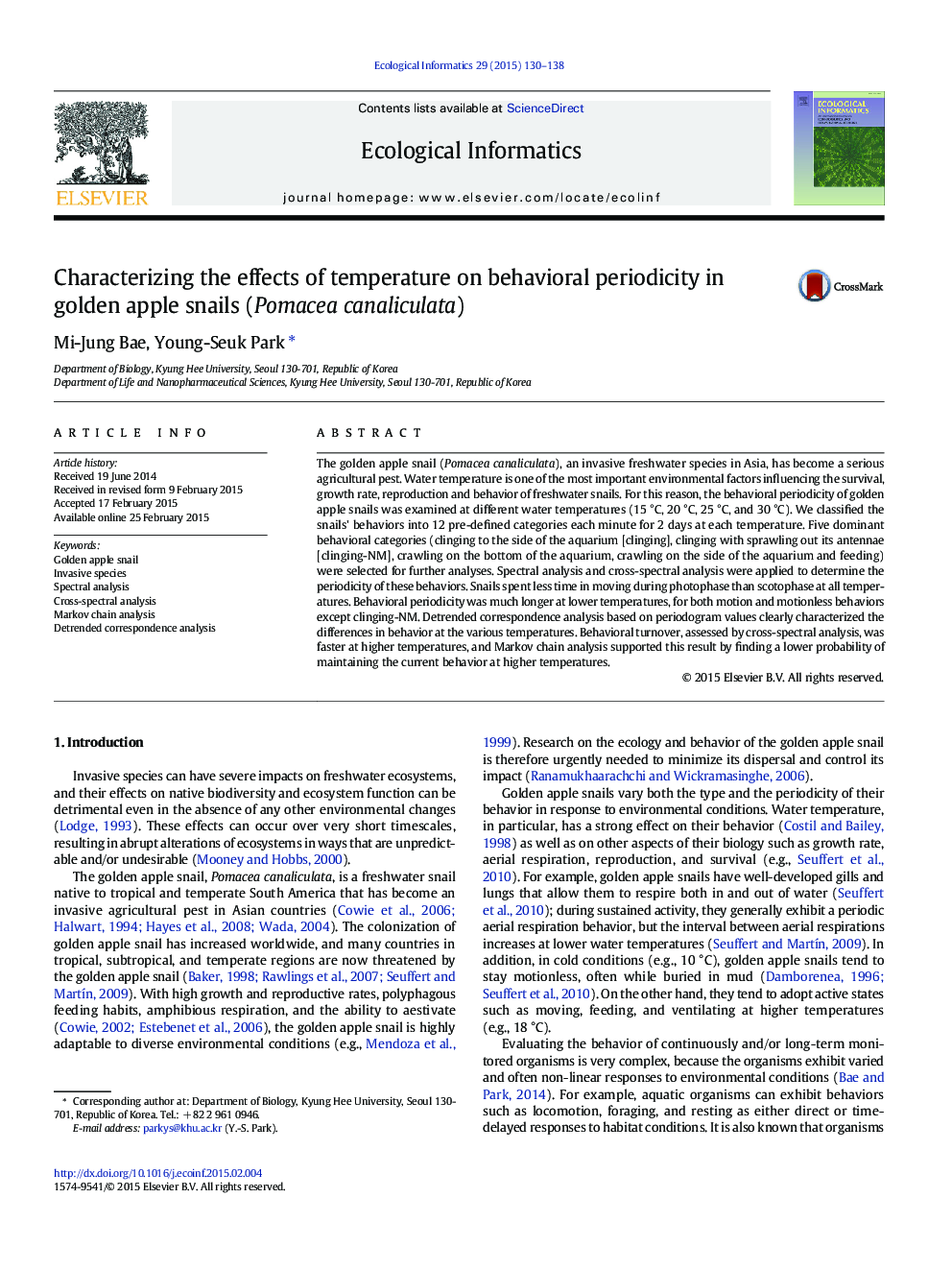| کد مقاله | کد نشریه | سال انتشار | مقاله انگلیسی | نسخه تمام متن |
|---|---|---|---|---|
| 4374799 | 1303217 | 2015 | 9 صفحه PDF | دانلود رایگان |

• We compared the behavioral periodicity of golden apple snails (GAS) at various temperatures.
• GAS tended to maintain their pre-existing behavior at lower temperatures.
• Behavioral periodicity was shorter at higher temperatures.
• A combination of DCA and spectral analysis was able to differentiate response behaviors between different temperatures.
• Behavioral turnover was characterized using cross-spectral analysis and Markov chain analysis.
The golden apple snail (Pomacea canaliculata), an invasive freshwater species in Asia, has become a serious agricultural pest. Water temperature is one of the most important environmental factors influencing the survival, growth rate, reproduction and behavior of freshwater snails. For this reason, the behavioral periodicity of golden apple snails was examined at different water temperatures (15 °C, 20 °C, 25 °C, and 30 °C). We classified the snails' behaviors into 12 pre-defined categories each minute for 2 days at each temperature. Five dominant behavioral categories (clinging to the side of the aquarium [clinging], clinging with sprawling out its antennae [clinging-NM], crawling on the bottom of the aquarium, crawling on the side of the aquarium and feeding) were selected for further analyses. Spectral analysis and cross-spectral analysis were applied to determine the periodicity of these behaviors. Snails spent less time in moving during photophase than scotophase at all temperatures. Behavioral periodicity was much longer at lower temperatures, for both motion and motionless behaviors except clinging-NM. Detrended correspondence analysis based on periodogram values clearly characterized the differences in behavior at the various temperatures. Behavioral turnover, assessed by cross-spectral analysis, was faster at higher temperatures, and Markov chain analysis supported this result by finding a lower probability of maintaining the current behavior at higher temperatures.
Journal: Ecological Informatics - Volume 29, Part 2, September 2015, Pages 130–138